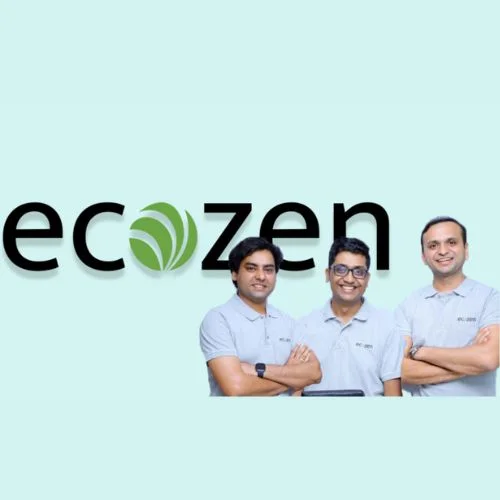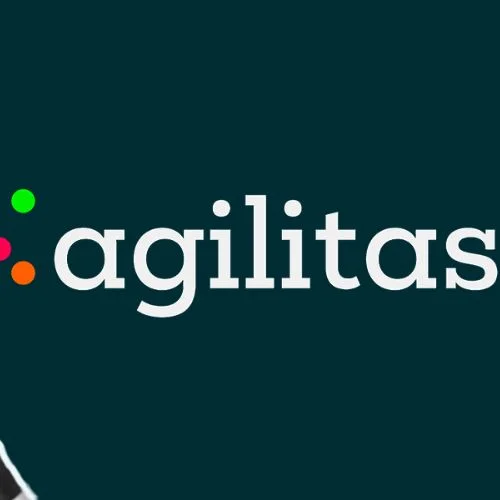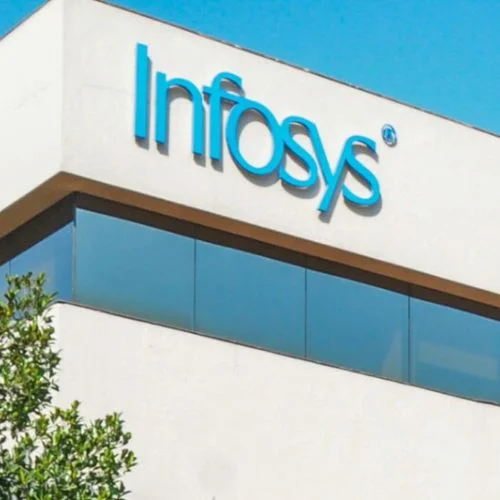Ethereum, the second-largest cryptocurrency by market cap, has completed the last dress rehearsal for a long-awaited upgrade that has been dubbed “one of the most crucial events in crypto history.” Since its inception about a decade ago, Ethereum has been mined via a method known as proof-of-work. It entails complicated arithmetic equations that a big number of machines compete to answer, and it necessitates a large amount of energy. Bitcoin mining is done similarly.
Ethereum has been striving to transition to a new network security paradigm known as proof of stake. Instead of using energy-intensive mining, the new technique asks users to use their current ether cache to validate transactions and manufacture tokens. It consumes significantly less power and is intended to result in speedier transactions.
Ansgar Dietrichs, an Ethereum Foundation researcher, stated in a tweet that the most important statistic for success in a dry run like this is the time for finalization. He referred to it as “another successful test.”
A Galaxy Digital research colleague pointed out that the participation rate reduced after the test merging, and it appeared that there was an issue with one of the clients — but overall, it worked. “A successful Merge = chain finalizes,” Christine Kim tweeted, adding that we’re likely to encounter similar troubles with the main net upgrade, “but the thing is, the Merge succeeded.”
The upgrade’s schedule will be considered during an Ethereum core developers meeting on Thursday. Previous estimates predicted that the merger would take effect in mid-September. For numerous years, Ethereum’s transition has been continuously postponed. According to core developers, the merger has been moving slowly to enable enough time for study, development, and implementation. The price of ether, the native currency of the Ethereum Blockchain, has risen about 80% in the last month, including a 10% jump in the previous 24 hours to roughly $1,875. However, it is still down by around half this year.
One of Ethereum’s tenets, Goerli (named after a Berlin railway station), replicated a procedure identical to what the main network, or main net, will conduct in September. Testnets enable developers to experiment with new ideas and make required changes before the updates are released to the main blockchain. The experiment on Wednesday night demonstrated that the proof-of-stake validation procedure significantly decreases the energy required for confirming a block of transactions, as well as that the merging process works.
“Goerli has the badge of a bottom-up test net,” said Josef Je, a developer who previously worked with the Ethereum Foundation and now manages the PWN peer-to-peer lending platform. Je went on to say that it was the most popular testnet at the time, and that proof of stake on Goerli will be nearly identical to how things would work on the mainnet. According to the Ethereum Foundation’s blog, Goerli is “the closest to mainnet, which might be beneficial for testing smart contract interactions.”
Identifying the bugs
Tim Beiko, the coordinator for Ethereum protocol developers, told CNBC that they normally know whether a test was successful “within minutes.” However, they will continue to monitor for various potential configuration concerns in the next hours and days to promptly resolve them. “We want to see the Network finish and have a high participation rate among validators, as well as avoid any unanticipated faults or difficulties,” Beiko explained. According to Beiko, the easiest measure to track is the participation rate, which indicates how many validators are online and doing their job. If the numbers fall, developers must determine why.
Another critical problem is that of transactions. Ethereum organizes transactions into groupings called blocks. Beiko stated that one obvious sign that the test performed well will be if the blocks include genuine transactions and are not empty. The final significant check is to see if the network is finalizing, which means that more than two-thirds of validators are online and agree on the chain history. Beiko claims that under normal network circumstances, it takes 15 minutes. “If those three things look excellent, then there’s a big list of secondary things to check, but things are moving well at that point,” Beiko explained.
‘More approachable’
The Ethereum community has been testing the proof-of-stake process on a chain dubbed beacon, which runs alongside the existing proof-of-work chain, since December 2020. Beacon has fixed several critical issues. Beiko stated that the initial concept needed validators to have 1,500 ether, which is today worth almost $2.7 million, to utilize the system. The new proof-of-stake plan lowers the hurdle, requiring interested users to just have 32 ether, or around $57,600.
“It’s still not a small sum,” Beiko noted, “but it’s a lot more approachable system.” Other significant changes have occurred in the run-up to Wednesday’s test. Ropsten, Ethereum’s longest-running testnet, successfully combined its proof-of-work execution layer with the proof-of-stake beacon chain in June. It was the first significant dry run of the procedure that the mainnet will go through next month, assuming all goes as planned. According to Beiko, testing the merging enabled engineers to guarantee that the software operating the Ethereum protocol was reliable and that “everything built on top of the network was ready for the transfer.”
As we approach the Merge, there are just a few more tests to guarantee that Ethereum’s proof-of-work (PoW) protocol moves seamlessly to its Beacon proof-of-stake (PoS) network. Aside from the Merge, the most anticipated event for Ethereum is the merge of its third and final test network environment, named Goerli, and the largest community merge, which takes place next week. Ethereum Developers just disclosed the conditions for the Goerli merging last week. The test is a two-part process, with the first stage most likely taking place today or tomorrow (August 3-4). This is known as Bellatrix, and it occurs when Goerli’s Beacon Chain, Prater, upgrades in preparation for the testnet merging. At epoch 112,260, Bellatrix will be completed. When Bellatrix reaches a Terminal Total Difficulty (TTD) of 10,790,000, it will combine with Goerli. Goerli will continue to operate as a PoS blockchain once the two join.
However, the functions of this merging are significantly different from past testnet mergers. Today, Goerli operates on the proof-of-authority (PoA) protocol, which allows computers to gain the ability to produce new blocks by completing a stringent verification procedure. As a result, reliable validation machines safeguard PoA blockchains. These system moderators are pre-approved users who review blocks and transactions. Given that Goerli is PoA, predicting when the real testnet merging will take place will be much more difficult. Tim Beiko, the Ethereum Foundation’s Protocol Support Lead, stated on the Ethereum Foundation Discord channel that “it’s impossible to forecast the behavior of the merge” under this sort of consensus process. Because you can’t scale up hash power under PoA, the fluctuation in incremental difficulty every block makes forecasting the window for the TTD more difficult, which is why Ethereum developers gave such a wide window for the Goerli merge.
This preliminary timing prediction will also apply to the future Ethereum mainnet merging. Once we have a firm date for a September Merge, we may anticipate developers to forecast a lengthy Merge activation window. In true Ethereum tradition, the Merge will take place whenever it takes place. The impending merge varies from past testnet mergers Sepolia and Ropsten not only in the type of consensus method used but also in the manner in which it will be carried out. Sepolia and Ropsten were mainly successful, providing developers with confidence that the PoW-to-PoS shift will go smoothly.
Sepolia is a younger, smaller testnet with few users and a permission beacon chain. As a result, engineers chose to start with Sepolia because it would be easier to migrate. Goerli, on the other hand, is one of the larger Ethereum testnets, with a lot of activity already going on. This final testnet will provide engineers with a wealth of data on a variety of fronts, and its merging and code will be as near to the true performance of Ethereum’s mainnet as feasible. Prater and Goerli’s results will set the tone for the weeks running up to the end of September. However, this testnet merging varies in two significant ways. First, node operators must update their Consensus Layer and Execution Layer simultaneously, rather than one at a time as in past testnet mergers. Second, Bellatrix and Goerli have both been activated and will unite, allowing the Goerli chain to continue.
As of today, the Goerli testnet will remain a part of the Ethereum ecosystem indefinitely, even after the merger. When testing new protocols, developers will be encouraged to use the Goerli testnet. While this will be the final testnet before the official Merge, Ethereum developers will continue to test smaller devnets and shadow forks in the build-up to the main event. Ethereum’s Merge has been repeatedly postponed to perfect the process rather than hurry through the shift. This method has enabled engineers to safely practice node operations, upgrades and backups, and validator removal while addressing the challenging and unprecedented step of modifying blockchain technology. Assuming no complications develop during the Goerli-Prater merging, we should expect the parameters and timetable for the mainnet Merge to be announced soon.
This will be the penultimate chapter before the long-awaited event.
During a Consensus Layer call, there was some discussion of an MEV-boost failure, but Ethereum developers acknowledged that the risk is quite low, and they are working on developing a temporary solution in the meanwhile. So brace up, for the pre-Merge period is coming to an end, and the next phase of a post-Merge Ethereum is just around the corner. Of course, this does not mean that Ethereum developers’ work is done. Their next round of challenges will try to improve Ethereum’s scalability and security.
Validated actions
For the first time in history, ether surpassed bitcoin in the options markets.
WHY DOES IT MATTER: At the time of writing, the total dollar amount of open interest in ether options on the main exchange Deribit was $5.7 billion, or 32% more than the $4.3 billion locked-in open bitcoin options contracts. “While some may be unsure about the Merge’s conclusion, at Deribit, we see a lot of post-Merge opportunities open for interest being formed.” Overall, the put-call ratio is at a year low, signaling bullish momentum,” said Luuk Strijers, Chief Commercial Officer at Deribit.
For the first time, ETH and BTC trade volumes converged.
WHY DOES IT MATTER: According to Kaiko statistics, ether’s market share of trading volume has reached 50% parity with bitcoin’s for the first time this year. “This might be due to FOMO from ETH 2.0 investors or to a shift in trend,” said Pablo Jodar, Financial products manager at Storm Partners. “Perhaps we will witness a shift in market dominance during the next bull market.”
WHY DOES IT MATTER: According to IntoTheBlock and CoinMetrics statistics, the number of daily active addresses or wallets that performed transactions surpassed 1,860 on July 18. Users most likely voted on a motion to introduce GHO, Aave’s yield-generating stablecoin. The idea was approved by the community over the weekend, and users will be able to manufacture GHO against a diverse collection of cryptocurrencies as soon as the token is released. In a tweet, IntoTheBlock stated, “On-chain activity for the $AAVE coin is on the rise.”
WHY IT MATTERS: Despite many people viewing the Merge as the network’s great finish, Vitalik Buterin said that Ethereum would be handling “the Surge, the Verge, the Purge, and the Splurge” after the Merge. The “Surge” refers to Ethereum providing mechanisms that will make the network more scalable by allowing the construction of layer 2 goods, whilst the “Verge” refers to the introduction of Verkle trees, which will optimize storage and reduce node sizes. The “Purge” seeks to decrease, or “purge,” sparse historical data to make the validation process more efficient, while the “Splurge” is defined as “the fun stuff” that ensures the network runs smoothly.
WHY IT MATTERS: Initially, Ankr’s SDKs will be available on the Ethereum, Polygon, BNB Chain, Avalanche, and Fantom networks. Developers can then allow users to stake tokens and earn incentives in exchange for a liquid staking token. Liquid staking allows users to receive a return on their locked tokens by releasing new tokens with the same value as the locked ones, so freeing up capital.
A glitch in the Beacon Chain
Ethereum may now be in the home stretch of its sprint (or jog) to the Merge, but a security hitch last week known as a “reorg” put the network’s readiness into question for a brief moment. The event had no major ramifications for consumers, but it did show the difficulty of maintaining a network without centralized supervision. Blockchains function by grouping transactions into discrete “blocks.” A dispersed community of workers — so-called “miners” in the case of proof-of-work networks, or “validators” in the case of proof-of-stake networks like the Beacon Chain – “propose” the blocks to the network.
If a sufficient number of workers agree that a certain block is acceptable – that it includes only authorized transactions – that block is added to the chain, and the process is repeated. Reorgs occur when part of a network’s validators (or miners) disagree on which block was most recently added to the blockchain. As a result, the network splits into two parallel chains, each adding new blocks in parallel with the other. The Beacon Chain was the site of Ethereum’s most recent “reorg.” Even though users can “stake” ether to become validators on the Beacon Chain, the chain will not execute user transactions until it is integrated with Ethereum’s mainnet. As a result, the incident had no substantial impact on users.
Reorganizations can occur for a variety of causes. Some Beacon Chain validators were utilizing upgraded software in this situation, allowing them to process blocks quicker than other validators. This caused some uncertainty among validators over which blocks had been added to the chain, resulting in a momentary split in the network. Validators eventually agreed on one “right” chain and abandoned the other. The inconsistency was swiftly fixed, but only after seven blocks had been added to the renegade Beacon Chain branch. It was Business as usual after validators agreed on which chain to follow; new blocks were released onto the proper, canonical chain, and any transactions that found their way onto the other chain were demoted to fresh blocks.
What exactly is the big deal?
Is there any harm, no foul? Not so quickly. Bad actors can use reorgs to engage in nefarious operations such as double-spending. They can also result in denied transactions, which is a huge annoyance for users. Blockchains deliberately aim to avoid reorgs, and Ethereum’s Beacon Chain reorg last week was the longest in years. Fortunately, last week’s reorg does not appear to have had any long-term impact on Ethereum. The reorg squabble would not have occurred if all validators had upgraded their client software as advised (as would be necessary by the time of the Merge). Nonetheless, the episode served as a harsh reminder of what is at stake if Ethereum’s Merge fails. With so many people anticipated to act as validators on Ethereum’s proof-of-stake chain, it highlights the coordination issues that Ethereum’s core development team is facing as it attempts to send out an upgrade to thousands of individual network operators.
Validated actions
Uniswap has processed more than $1 trillion in trade volume during its existence.
WHY DOES IT MATTER: Uniswap is the most active decentralized exchange. While centralized exchange Binance sees approximately $15 billion in trading volume every 24 hours, Uniswap predicts a $500 billion growth in trading volume since the fourth quarter of 2021, and it is used by more than 83% of Defi customers. Uniswap Labs CEO Hayden Adams stated in a tweet that he “never anticipated Uniswap to expand the manner that it has.”
WHY IT MATTERS: Wall Street bankers argue that the Federal Reserve developing its digital currency might shake the financial system and hurt consumers. The American Bankers Association stated in a letter that the possibility of a central bank digital currency would imply that “deposits accounting for 71% of banks funding are in danger of shifting to the Federal Reserve.”
WHY IT MATTERS: Polkadot’s Moonbeam, a communication layer between the Ethereum blockchain and Polkadot-based businesses, is collaborating with the staking derivative platform Lido. DOT holders can stake their assets in the form of xcDOT (cross-chain DOT) and obtain stDOT (staked DOT) in exchange. Holders of stDOT not only support the proof-of-stake network, but they also acquire the possibility to generate an additional return in decentralized finance (Defi).
Read– Crypto exchange WazirX laysoff as many as 50-70 employees amidst economic slowdown















